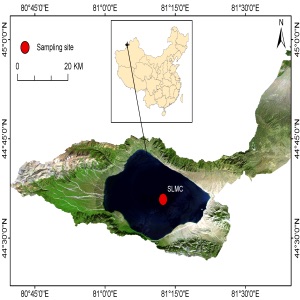Short Communications
Vol. 82 (2023)
The prevalence of Atribacteria affiliated with JS1 in the sediment core of Lake Sayram, the largest alpine lake, China

Publisher's note
All claims expressed in this article are solely those of the authors and do not necessarily represent those of their affiliated organizations, or those of the publisher, the editors and the reviewers. Any product that may be evaluated in this article or claim that may be made by its manufacturer is not guaranteed or endorsed by the publisher.
All claims expressed in this article are solely those of the authors and do not necessarily represent those of their affiliated organizations, or those of the publisher, the editors and the reviewers. Any product that may be evaluated in this article or claim that may be made by its manufacturer is not guaranteed or endorsed by the publisher.
Received: 28 July 2023
Accepted: 27 October 2023
Accepted: 27 October 2023
1092
Views
235
Downloads
6
HTML







